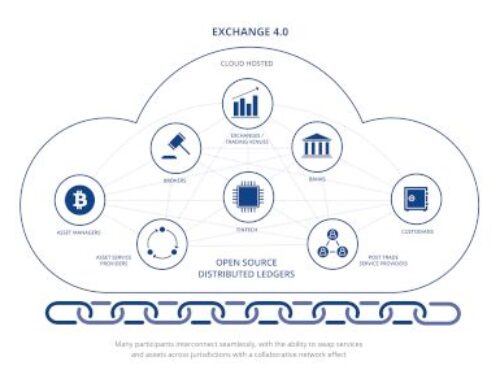Being agile and adaptable in this fast-moving market is essential, and a single month in ‘blockchain-land’ is equivalent to 6-12 months in the traditional world.
The technology is fundamentally game-changing and should be used to facilitate high impact change. Sometimes second-mover advantage is beneficial; learning from first-mover successes and mistakes allows us to optimise or design something much better. Think digital watches: the UK invented them, but the Japanese perfected them and by mass marketing the output, Casio was able to dominate the market globally.
Of course, any technology or services company must create its own technology or product IP but as we enter the era of Tokenomics, collaboration becomes key in that it creates a network effect, leading to greater productivity using less resource and time than a normal corporate approach.
I call this an era of Token Augmenting Partnerships (TAP). Think of a company as a node and its associated network branching into many different initiatives, which in turn creates a mesh matrix that acts as a ‘super network’ allowing every product and service to be exchanged for every other; defined by the token value of the node and the associated network offering it. In addition, as more innovative IP is created, and more knowledge is shared or combined between network partners, the whole network is able to stay ahead as a collective. Everyone has the ability to share in token value from the utility increasing trade and investment.
Any asset can be tokenised and exchanged e.g. digital gold against crypto, or crypto against tokenised securities, with a defined pricing matrix and mechanism to facilitate the exchange whether it be centralised or decentralised. For example, if a digital asset exchange trades gold backed by secure physical gold and another trades cryptocurrencies, the two can allow clients access to each other’s products, increasing trade value for both. We are in a new age of barter, where commerce can be democratised and efficiency will emerge. As projects evolve, bridging the gap between the current world economy and the fast emerging digital token economy, we will see greater cohesion.
Regulation is also key to this. Sham ICOs have to be stopped and robust KYC / AML processes and rules must be put in place. Ultimately the current regulatory confusion will correct itself as there will be a flight to quality to those jurisdictions with robust laws and regulations in place. The unregulated bucket shop exchanges with poor controls will cease to exist as properly run and secure technology enabled exchanges and digital asset custodians come into the market to facilitate increased institutional business and wholesale retail business.
It seems like every other day there is an announcement about yet another proposed institutional crypto exchange. But while many may come, like the SEFs in the US and MTFs in Europe, only a small number will succeed, and we will see inevitable consolidation. Much like exchanges today, even though they are increasingly cross border, there will still be a role for strong regional-centric plays and in turn collaboration between exchanges focussed on specific regions. We will also see traditional exchanges reinvent themselves in order to position themselves in the digital asset age.
Additionally, more Crypto / ICO funds will emerge as high net-worths invest into the sector to diversify their portfolios, and will demand well-vetted projects with deliverables (not just a web-site and whitepaper) and diversification across ICOs rather than a single project. As the market matures, albeit innovation will continue at this pace, regulators and policy makers should ensure regulation is pragmatic yet robust.
It is a fine balancing act yet one thing is clear to me, Tokenomics is here to stay and if embraced properly, offers us all unprecedented opportunities in terms of size and scope. Here’s to the next six months of innovation and I can’t wait to see how much more will be achieved.


